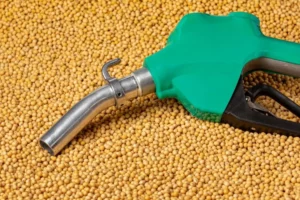In 2023, the soy and biodiesel industry in Brazil witnessed a robust 21% GDP growth, outpacing the prior year’s performance.
This upturn spanned the entire supply chain, notably in soy farming, as highlighted by research from Cepea at Esalq/USP and Abiove.
The analysis pinpointed a rise across various sectors: inputs grew by 6.24%, soy production by a remarkable 39.2%, agro-industry by 6.82%, and agro-services by 16.58%.
Despite these gains, real income fell by 5.34%, primarily due to price drops.
Yet, the sector contributed significantly to the economy, adding R$ 635.9 billion ($127.18 billion) to the GDP, which accounts for 23.2% of agribusiness and 5.9% of the national GDP.

Employment in this sector hit a new high, with 2.32 million workers, up 10.74% from 2022.
This growth underscores the sector’s key role in Brazil’s agribusiness and overall economy, contributing 10.07% and 2.35% to each, respectively.
Job creation was particularly strong in the biodiesel agro-industry, which saw an 18.45% increase in employment.
The inputs and agro-services segments also saw growth, reflecting the sector’s robust production and agro-industrial performance.
However, the farming and crushing/refining sectors saw a decline in employment.
Dynamics of International Trade in 2023
On the international trade front, exports from the chain totaled $67.6 billion in 2023, marking a 10.24% increase from the previous year.
This was mainly driven by higher shipment volumes, despite a decrease in export prices.
Exports notably surged to China, North America, East Asia, and Southeast Asia, representing 72.39% of total exports.

